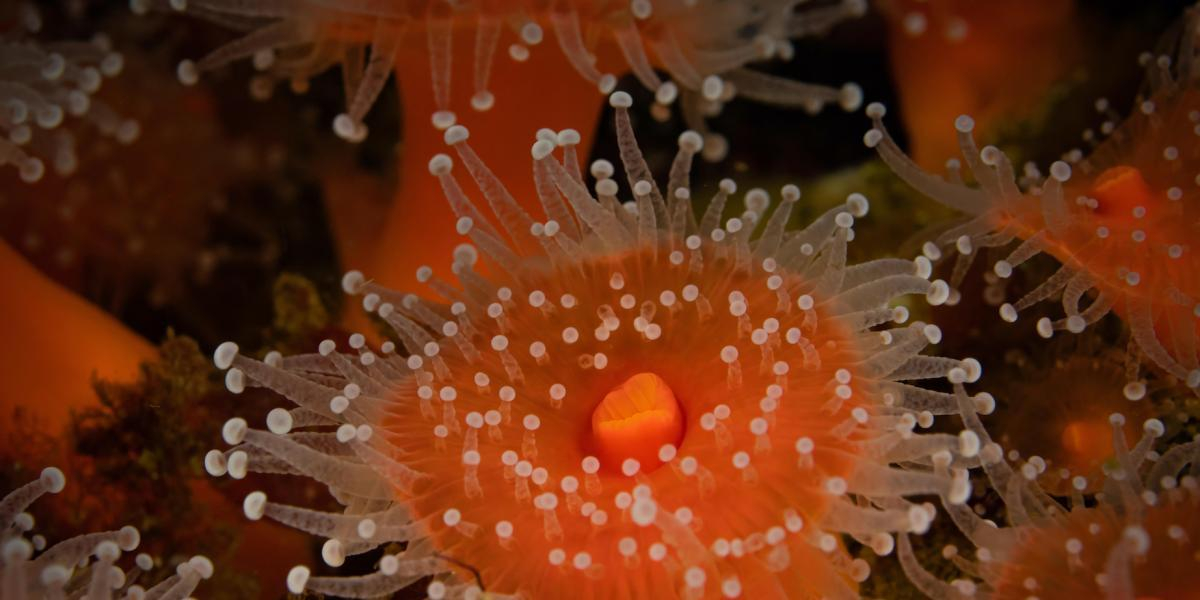Support strong Canadian climate journalism for 2025
Adversity led to an astonishing scientific discovery for tropical coral researchers in B.C. stranded at home shores during the pandemic.
Forced to explore frigid waters on their doorstep, scientists with the Keeling Lab at the University of British Columbia found parasites thought only to infect corals in southern climes are also abundant in cold marine life along the West Coast.
“COVID-19 hit and we had a whole bunch of work planned with coral reefs that got cancelled,” said Patrick Keeling, senior researcher for a new study on the findings.
“So I thought, ‘Well, let’s do a project and look into local animals related to corals and see whether these things are here or not.’”
The presence of the microbial parasite will have a big ripple effect on their study across the Pacific and how they might impact marine life in both warm and cold waters, said Keeling.
Called a “corallicolid” because it is found in 70 per cent of corals around the world, the parasite replicates inside the cells of marine life they infect.
However, the parasites are commonly found in coral reefs that suffer higher mortality rates during bleaching events triggered by heat stress.
On Monday, international research groups confirmed coral reefs are bleaching at a global level for a fourth time — and the second time this decade — because of record-high ocean temperatures due to human-caused climate change.
Since February 2023, significant coral bleaching has been occurring in tropical oceans worldwide, including off Florida, in the Caribbean, off Latin America, in the South Pacific (Australia’s Great Barrier Reef), as well as in the Indian Ocean and Red Sea, according to the National Oceanic and Atmospheric Administration (NOAA) in the U.S.
Bleaching happens when stressed coral eject the symbiotic algae that give them colour and provide them with food, leaving reefs a skeleton white colour and vulnerable to die-off.
If corals in tropical waters are more vulnerable to bleaching and warming waters because of the parasite, this may also pose concerns for marine life infected with corallicolids in cold-water ecosystems as ocean warming occurs.
The parasites appear widespread in B.C.’s marine ecosystems after more than 300 samples at five locations were collected from nine different types of coral-related marine animals, including sea anemones and sea pens, said researcher Morelia Trznadel, the study’s lead author.

It appears that B.C. marine life hosting the parasite are largely unharmed, but it's likely the corallicolids would also be detrimental to these animals if they were stressed, Keeling said.
Cold-water anemones host and depend on the same algae for their health as tropical corals. This may mean corals’ cold-water cousins are also potentially vulnerable if they also expel algae more readily under stressful ocean conditions.
“They do bleach. It's kind of hard to imagine, but we might conceivably see the same kind of thing happening with [tropical] coral happening to our anemones someday,” Keeling said.
The parasites have probably been in B.C. waters for some time but simply weren’t found because people weren’t looking for them, he said, but also due to a scientific “blind spot” because typical water-testing methods would not readily identify the parasite.
Curiously, corallicolids belong to a group of intracellular parasites that also cause human diseases like malaria, Keeling said, adding the microbe newly discovered in B.C. marine life isn’t dangerous to humans.
The next step is to test B.C.'s cold-water corals, which are tricky to sample because they are typically found in very deep water, unlike tropical reefs that tend to be in shallower waters, Keeling said.
The discovery suggests the parasites are moving readily across the entire Pacific but a lot of questions remain about the conditions that drive their distribution and where they might originate, Keeling added.
Finding the corallicolids in B.C. waters means more research is needed to learn more about how and which cold-water animals the parasites may affect most, Trznadel said.
“We want to better understand how to preserve these ecosystems and keep oceans healthy, so it’s important to understand more about these parasites,” she said.
“That way, we can get a clearer sense of the big picture.”
Rochelle Baker / Local Journalism Initiative / Canada's National Observer







Comments
That's very interesting that there's a new found parasite in BC waters. It begs the following questions.
You say it has been here for a while. You didn't say they arrived with our warming waters. Did they?
What do these parasites take from their hosts? There's no blood in corals to suck. It would help if we were told how they weakened their hosts.
Do these parasites have any thing to do with the starfish collapse?